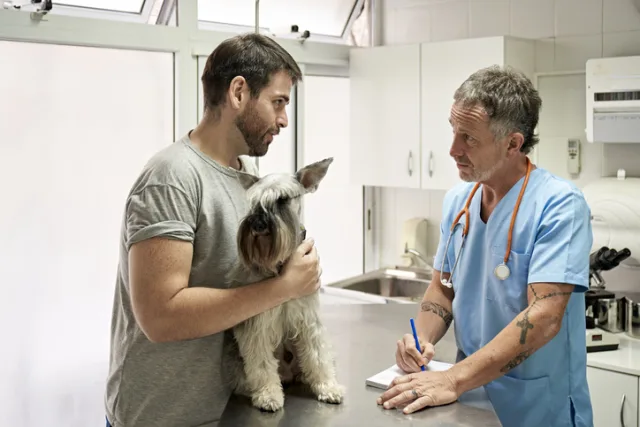
In the Literature
Gibson J, Brennan ML, Oxtoby C, Mossop L, White K. Ethical challenges experienced by veterinary practitioners in relation to adverse events: insights from a qualitative study. Vet Rec. 2023;193(12):e3601. doi:10.1002/vetr.3601
The Research …
Ethical dilemmas arise when there are conflicting interests of equal moral importance and a lack of clear behavior guidance or when the right course of action is clear but difficult to enact.1 Patient safety practices aim to alleviate risk for adverse events associated with unexpected complications, medical errors, negligence, and professional misconduct.2,3 Ethical guidance and support are a central component of patient safety in human medicine but are lacking in veterinary medicine.4-7
In this study, ethical challenges related to adverse events were explored through interviews of veterinary staff (n = 67) in the United Kingdom who had experienced an adverse event and associated client complaint during a 2-year period. Discussions centered around ethical challenges when trying to prevent an adverse event and following an adverse event. Common ethical dilemmas when attempting to prevent an adverse event included limits to prioritizing animal welfare when making clinical decisions, autonomy about clinical decisions, exceeding one’s comfort zone in providing patient care, respecting clinical experience versus incorporating published evidence, and balancing communication with management about substandard practices and reluctance to draw attention to oneself.
Following adverse events, ethical challenges included moving away from a practice culture of seeking to place blame while taking personal accountability, reluctance to seek support (also common among those experiencing moral stress8), and deciding whether to provide open disclosure, an apology, and/or financial reimbursement to clients.2
… The Takeaways
Key pearls to put into practice:
A patient’s best interest paradigm may help guide veterinary staff and reduce moral stress when facing ethical dilemmas. Applying a standardized ethical framework upon discovery of errors can help determine a course of action that considers the interests of all stakeholders and allows staff to honor their values.
Fear of speaking up is a major barrier to transparency and disclosure of medical errors and adverse events. Conflict exists between moral duty to acknowledge a mistake and its resultant harm and desire to protect oneself from potentially serious repercussions of admitting errors. Most veterinary professional ethical principles note that honesty is a key component of ethical behavior, which requires courage. Disclosure allows veterinary staff to honor their values and ethical beliefs, can rebuild trust and retain clients, and may reduce the likelihood of legal action or veterinary medical board complaints. Practices should support transparency with actions and policies.
The intent behind identifying causes of veterinary medical errors should be understanding, not assigning blame. Understanding causation is essential for learning from mistakes and making changes to reduce the likelihood of recurrent errors.
In addition to harming patients, medical errors are harmful to staff members. It is therefore important to offer care, kindness, and support to staff as well as patients and pet owners impacted by adverse events.
You are reading 2-Minute Takeaways, a research summary resource proudly presented by Clinician’s Brief. Clinician’s Brief does not conduct primary research.